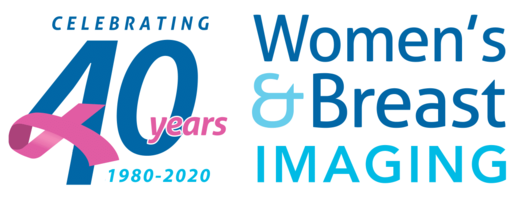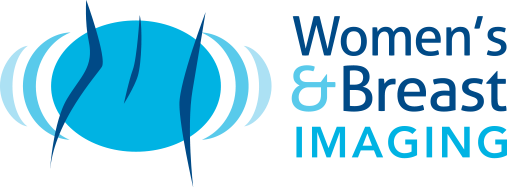Mammogram studies remain the hallmark for evaluating the breast for both benign (non cancerous) and malignant (cancerous) conditions of the breast. Mammogram studies allow us to identify abnormalities in the breast when they are still very small and not clinically detectable, either through breast self-examination or during examination by your doctor.
Method
- The breast tissue must be reduced in thickness as much as possible to allow the best imaging of the underlying structures within the breast.
- The breast tissue is compressed to allow optimum imaging of breast tissue while at the same time minimising the radiation dose needed to obtain adequate images.
- Mammograms may cause some discomfort for some women, however the process lasts only a few seconds and the degree of compression is tailored to suit individual patients’ sensitivity.
- Mammogram studies at Women’s & Breast Imaging may comprise of two or three standard views of each breast and additional views may subsequently be taken to clarify the appearances seen on the routine mammogram study.
- Additional views (sometimes called magnification or spot views) are quite commonly required and they are usually obtained at the time the mammogram is performed.
Use
- Mammogram studies are the central component in evaluating patients who have a clinical problem and remains the basis of our work at Women’s & Breast Imaging.
- Mammogram studies are also used for routine breast screening in women with no symptoms or breast abnormalities.
- Women’s & Breast Imaging is a diagnostic and a screening clinic. The majority of patients who present to our clinic have a problem with the breast which needs to be resolved through imaging or biopsy.
- Women’s & Breast Imaging also performs yearly screening mammograms on many women.
- Current government guidelines suggest routine screening of all women age 50 – 74 every two years. This is the basis of the breast screening programmes conducted throughout Australia.
- There is increasing evidence that screening mammograms are beneficial in women aged 40 – 49 (in addition to the 50 – 69 age group). Also, there is further evidence to suggest that screening mammograms should be conducted every year rather than every two years and of course depending on individual’s family breast cancer history and breast density.
- Women’s & Breast Imaging recommends all women over 40 have a mammogram once a year.
- Women who have a strong family history of breast cancer benefit from routine screening mammogram studies.
- Women’s & Breast Imaging recommends women with a first degree relative commence screening mammograms approximately 10 years prior to the age of diagnosis of breast cancer in that relative.
Time
Mammograms at Women’s & Breast Imaging takes between 15 to 30 minutes depending on the number of images and/or extra imaging needed for the study.
3D Mammogram (Breast Tomosynthesis)
It is a technology that helps to eliminate most detection challenges within 2D mammography.
3D mammography studies show cancers and abnormalities that was previously challenging to find in 2D images; significantly improving the detection rate compared with 2D mammography alone.
-
- Detects 41% more invasive breast cancers. Reduces false-positives, decreasing recall rates by 15-40%.
- Reduces false-positives, decreasing recall rates by 15- 40%.
- May reduce the number of unnecessary biopsies.
- Increases cancer detection in women with dense breasts.3D mammograms can be performed in conjunction with a 2D exam for screening purposes or by itself as a diagnostic mammogram.
How does 3D mammography work?
Breast tomosynthesis is essentially a three-dimensional (3D) mammogram which has been shown in clinical studies to be superior to conventional 2D mammography alone.
3D mammography allows the breast tissue to be examined in thin ‘layers’, typically 1mm thick.
During a 3D mammogram, the x-ray arm sweeps in a slight arc over the breast, taking a series of images at various angles in just seconds.
The advanced technology converts the digital breast images into a stack of very thin layers or ‘slices’ to build a 3D image.
Very low X-ray energy is used during the examination ensuring radiation exposure is within the recommended guidelines.
More about Breast Tomosynthesis

